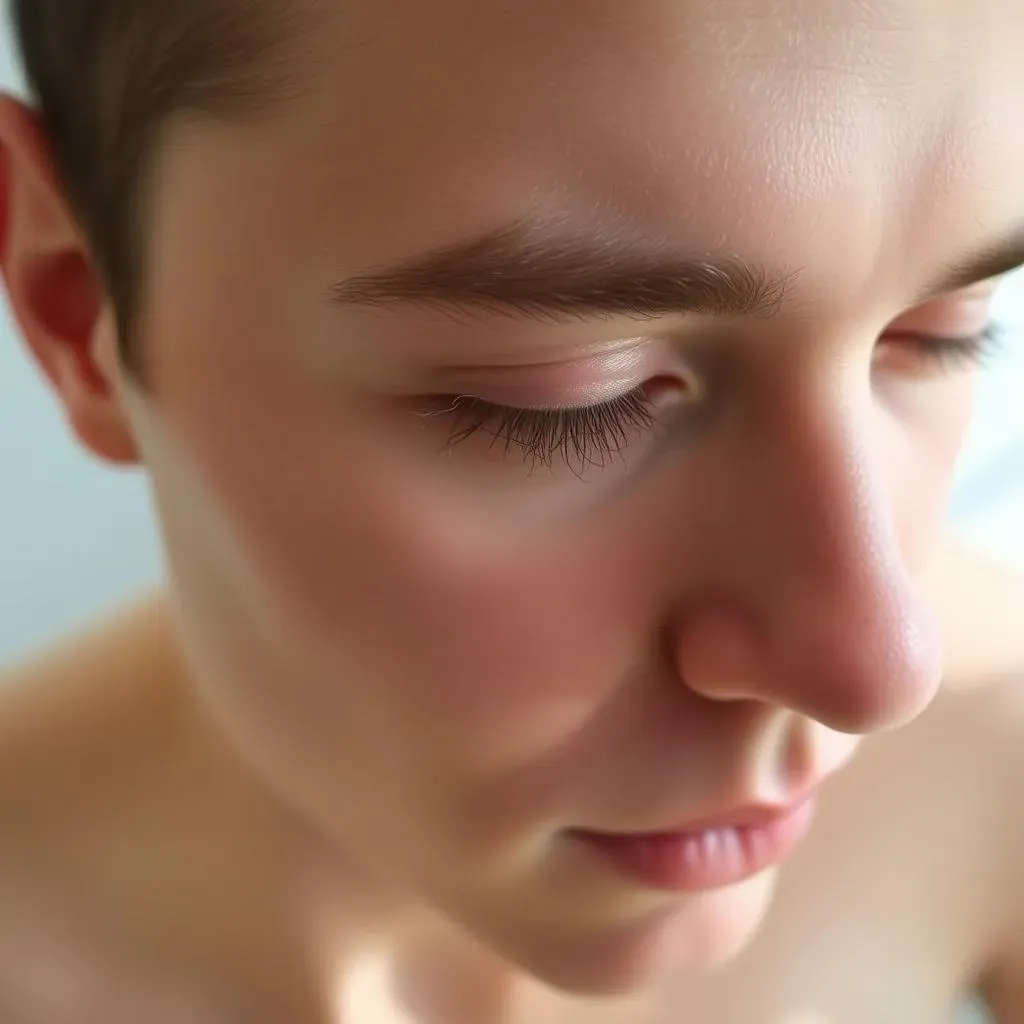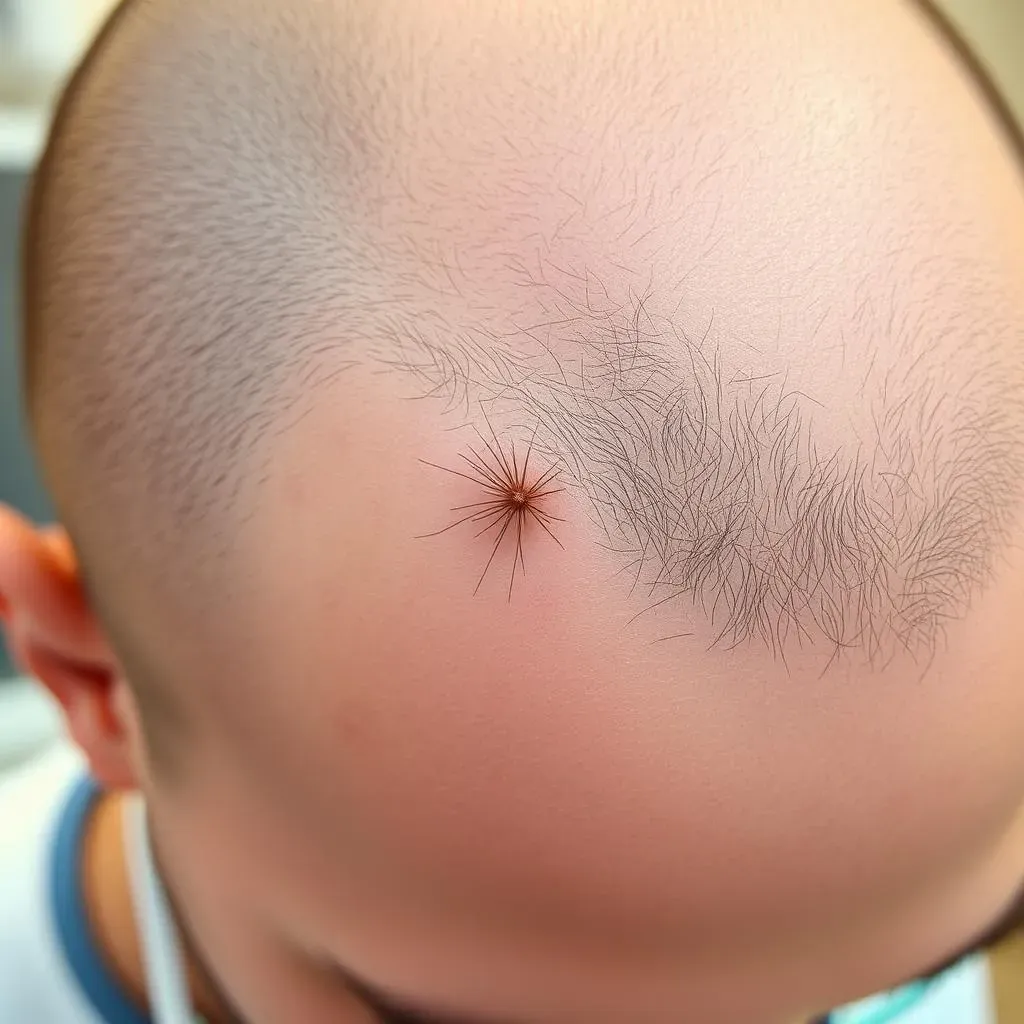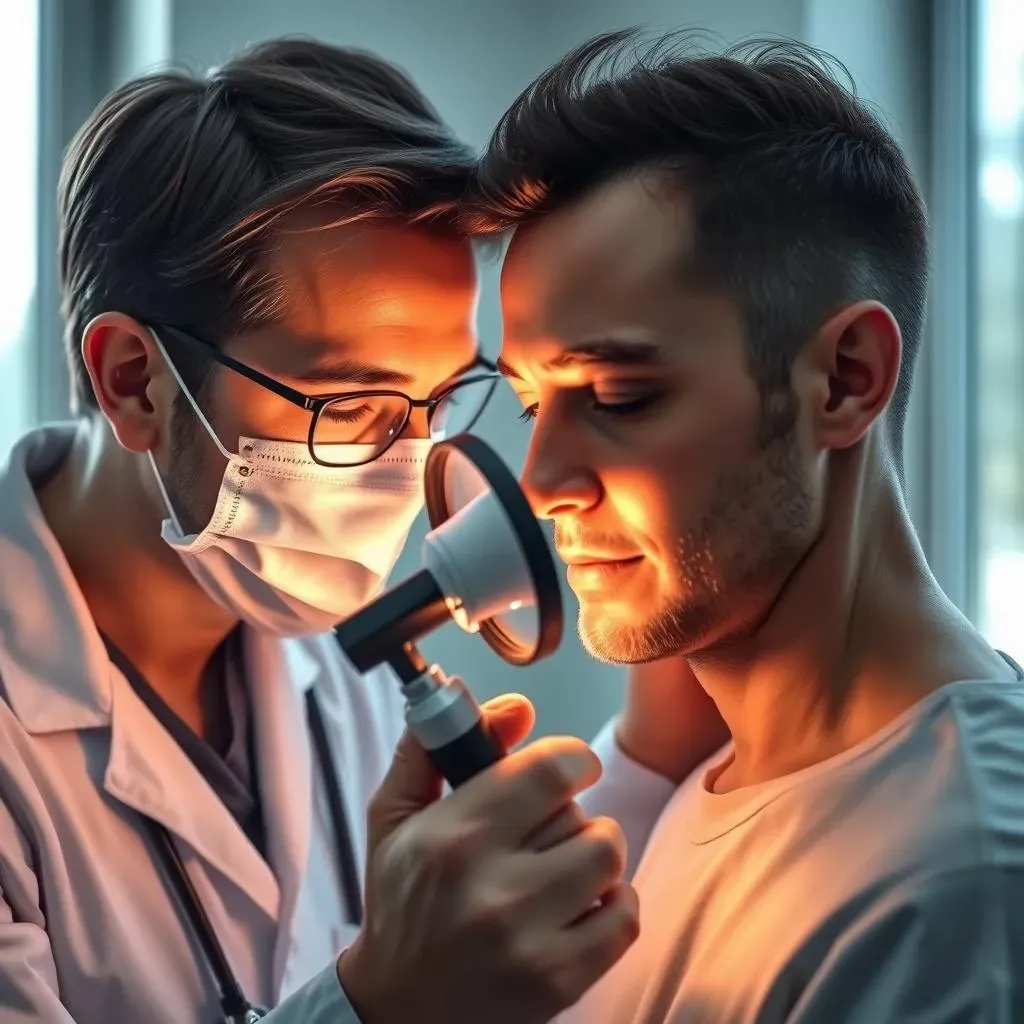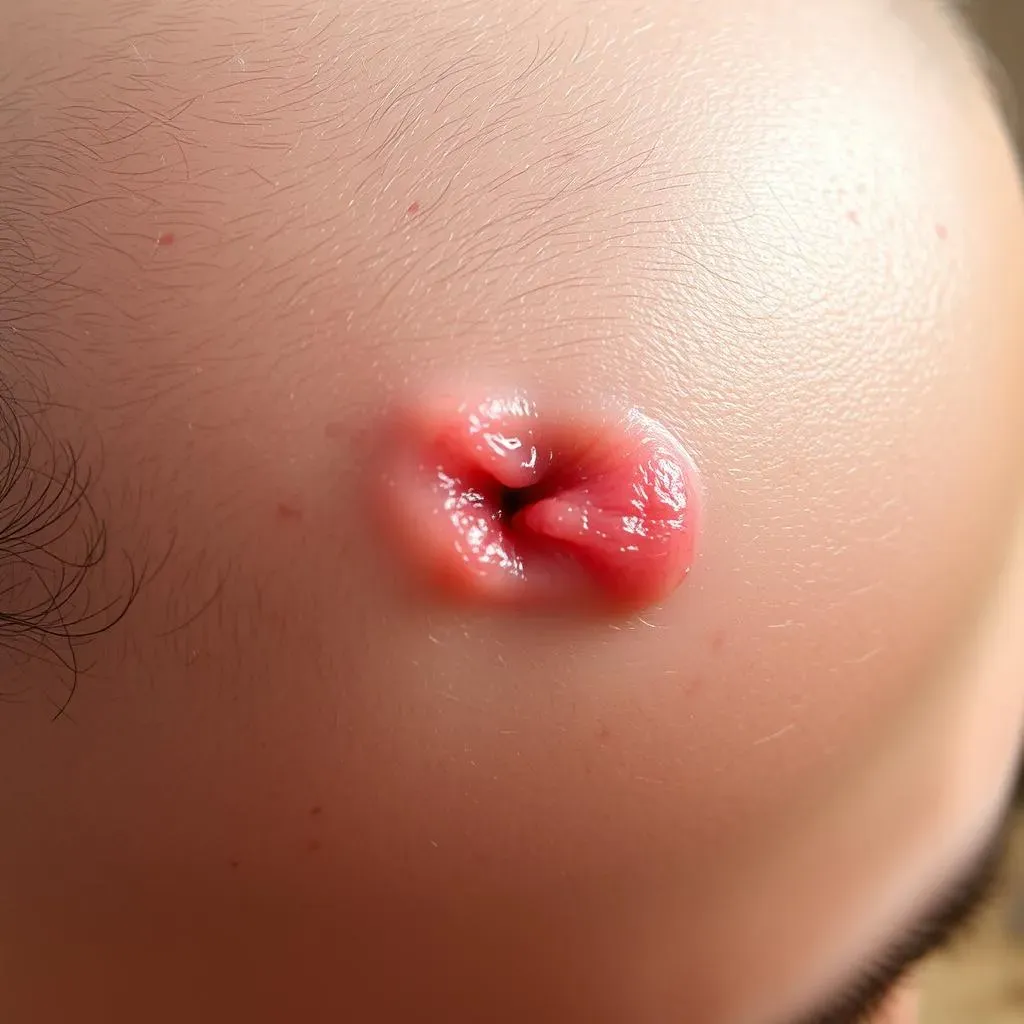Table of Contents
Ingrown hairs on the scalp can be a painful and frustrating problem, causing redness, itching, and swelling. If you're struggling with scalp ingrown hair, you're not alone. Many people experience this issue, especially after hair removal methods like shaving or waxing. But there is hope for effective scalp ingrown hair removal and prevention. In this article, we'll delve into the causes and symptoms of ingrown hairs, explore various removal techniques and treatments, and provide valuable tips on how to prevent them from occurring in the first place. Whether you're looking for at-home remedies or professional treatments, we've got you covered. Our goal is to equip you with the knowledge and tools necessary to achieve a healthy, ingrown-hair-free scalp. So, let's get started on this journey to scalp ingrown hair removal and discover a smoother, healthier scalp.
Understanding Scalp Ingrown Hair: Causes and Symptoms

Understanding Scalp Ingrown Hair: Causes and Symptoms
Ingrown hairs on the scalp occur when hair grows back into the skin, causing inflammation, redness, and discomfort. This can happen to anyone, but people with curly or coarse hair are more prone to ingrown hairs due to the shape of their hair follicles. Shaving, waxing, and other hair removal methods can increase the risk of ingrown hairs, as they can cause the hair to grow back into the skin.
Symptoms of ingrown hairs on the scalp include small, round bumps that may be itchy or painful. These bumps can become infected, leading to increased redness, swelling, and pus. If left untreated, ingrown hairs can lead to scarring, hyperpigmentation, and even permanent hair loss.
Symptom | Description | Treatment |
|---|---|---|
Small bumps | Round, itchy, or painful bumps on the scalp | Warm compresses, gentle exfoliation |
Infection | Increased redness, swelling, and pus | Topical antibiotics, antiseptic creams |
It's essential to recognize the signs of ingrown hairs early on to prevent further complications. Proper scalp care, including regular shampooing and moisturizing, can help reduce the occurrence of ingrown hairs.
- Avoid tight hairstyles that pull on the hair follicles
- Use gentle hair care products suitable for your hair type
- Exfoliate your scalp regularly to remove dead skin cells
Scalp Ingrown Hair Removal Techniques and Treatments

Scalp Ingrown Hair Removal Techniques and Treatments
Ingrown Hair Removal Techniques
When it comes to removing ingrown hairs on the scalp, it's essential to approach the situation with care to avoid further irritation or infection. One of the most effective methods is to apply a warm compress to the affected area. Soak a cloth in warm water, wring it out, and apply it to the ingrown hair for 5-10 minutes. This helps to soften the skin and bring the hair to the surface, making it easier to remove.
Another technique is gentle exfoliation. Using a soft-bristled brush or a gentle scrub, massage the scalp in circular motions to help loosen the ingrown hair. Be cautious not to scrub too hard, as this can cause further irritation. For more severe cases, a dermatologist may recommend using a sterile needle or blade to carefully remove the ingrown hair.
Removal Method | Description | Risks and Considerations |
|---|---|---|
Warm Compress | Softens skin, brings hair to surface | Low risk, but avoid if infected |
Gentle Exfoliation | Loosens ingrown hair | Avoid scrubbing too hard |
Professional Removal | Uses sterile needle or blade | Higher risk of infection if not done properly |
Treatments for Ingrown Hairs
Once an ingrown hair is removed, it's crucial to treat the area to prevent infection and promote healing. Topical creams and ointments, such as hydrocortisone or antibiotic creams, can help reduce inflammation and fight bacterial infections. In severe cases, oral antibiotics may be prescribed.
Additionally, practicing good scalp hygiene is vital. Wash your scalp regularly with a gentle shampoo, and consider using a scalp serum or oil to keep the skin moisturized and healthy. Avoid picking or scratching the affected area, as this can lead to further complications.
- Apply topical creams as directed
- Keep the scalp clean and moisturized
- Avoid picking or scratching the affected area
Preventing Scalp Ingrown Hair: Tips and Best Practices

Preventing Scalp Ingrown Hair: Tips and Best Practices
Best Practices for Scalp Care
Preventing ingrown hairs on the scalp starts with proper scalp care. Keeping your scalp clean and moisturized can help reduce the risk of ingrown hairs. Wash your scalp regularly with a gentle shampoo, and consider using a scalp serum or oil to keep the skin hydrated and healthy. Avoid using harsh chemicals or exfoliants that can strip the scalp of its natural oils.
Exfoliating your scalp regularly can also help remove dead skin cells and prevent ingrown hairs. Use a soft-bristled brush or a gentle scrub, massaging the scalp in circular motions. Be cautious not to scrub too hard, as this can cause irritation and lead to ingrown hairs.
Scalp Care Product | Benefits | Recommendation |
|---|---|---|
Gentle Shampoo | Cleans without stripping natural oils | Use 2-3 times a week |
Scalp Serum | Hydrates and nourishes the scalp | Apply after shampooing |
Exfoliating Scrub | Removes dead skin cells | Use 1-2 times a week |
- Avoid harsh chemicals
- Use gentle, sulfate-free shampoo
- Exfoliate regularly
Additional Tips for Ingrown Hair Prevention
In addition to proper scalp care, there are several other tips that can help prevent ingrown hairs. Avoid tight hairstyles that pull on the hair follicles, such as braids or ponytails, as these can cause hair to grow back into the skin. Also, consider using a razor with a single blade when shaving, as this can help reduce the risk of ingrown hairs.
Furthermore, wearing loose, comfortable clothing can help reduce friction on the scalp, which can contribute to ingrown hairs. Keeping your hands away from your scalp and resisting the urge to scratch or pick at ingrown hairs can also help prevent infection and promote healing.
Prevention Method | Benefits | Tips |
|---|---|---|
Avoid Tight Hairstyles | Reduces follicle tension | Opt for loose styles |
Use Single-Blade Razor | Minimizes hair cutting | Shave in direction of hair growth |
Wear Loose Clothing | Reduces friction | Choose breathable fabrics |
- Resist scratching or picking
- Wash hands frequently
- Avoid sharing personal items
Managing Ingrown Hair Infections on the Scalp

Managing Ingrown Hair Infections on the Scalp
Identifying and Treating Ingrown Hair Infections
Ingrown hair infections on the scalp can be painful and frustrating. If left untreated, they can lead to more severe complications, such as scarring, hyperpigmentation, and even permanent hair loss. It's essential to recognize the signs of infection, which may include increased redness, swelling, and pus around the affected area.
To treat an infected ingrown hair, apply topical antibiotic creams or ointments to help combat bacterial infections. In some cases, oral antibiotics may be prescribed by a doctor. Keeping the scalp clean and moisturized is also crucial in promoting healing and preventing further infection.
Infection Symptom | Description | Treatment |
|---|---|---|
Increased Redness | Area around ingrown hair becomes red and inflamed | Apply topical hydrocortisone cream |
Swelling and Pus | Area becomes swollen, with visible pus | Apply topical antibiotic cream, consider oral antibiotics |
Fever | Body temperature rises due to infection | Seek medical attention, may require oral antibiotics |
- Apply topical creams as directed
- Keep the scalp clean and moisturized
- Avoid picking or scratching the affected area
Preventing Ingrown Hair Infections
Preventing ingrown hair infections is crucial to avoid complications. Practicing good hygiene is essential, including washing your hands before touching your scalp and avoiding sharing personal items like towels or combs. Regularly cleaning and moisturizing the scalp can also help prevent infections.
Avoiding tight hairstyles and using gentle hair removal techniques can reduce the risk of ingrown hairs. Consider wearing loose, breathable clothing to minimize friction on the scalp. By following these tips, you can reduce the risk of ingrown hair infections and maintain a healthy scalp.
Prevention Method | Benefits | Tips |
|---|---|---|
Good Hygiene | Reduces risk of infection | Wash hands frequently, avoid sharing personal items |
Gentle Hair Removal | Minimizes risk of ingrown hairs | Use single-blade razor, shave in direction of hair growth |
Loose Clothing | Reduces friction on scalp | Choose breathable fabrics, avoid tight clothing |
- Wear loose, breathable clothing
- Avoid tight hairstyles
- Practice good scalp hygiene
Scalp Ingrown Hair Removal at Home vs. Professional Treatment

Scalp Ingrown Hair Removal at Home vs. Professional Treatment
At-Home Ingrown Hair Removal Methods
Removing ingrown hairs at home can be a cost-effective and convenient option for those with mild cases. One of the most popular at-home methods is using a warm compress to soften the skin, followed by gentle exfoliation to bring the ingrown hair to the surface. This can be done using a soft-bristled brush or a gentle scrub, massaging the scalp in circular motions.
Another method is to use ingrown hair creams or serums that contain ingredients like salicylic acid or tea tree oil. These products can help to reduce inflammation, prevent infection, and promote healing. However, it's essential to follow the product's instructions and start with a small patch test to ensure you don't have any sensitivity or allergic reactions.
At-Home Method | Description | Risks and Considerations |
|---|---|---|
Warm Compress | Softens skin, brings hair to surface | Low risk, but avoid if infected |
Gentle Exfoliation | Loosens ingrown hair | Avoid scrubbing too hard |
Ingrown Hair Creams | Reduces inflammation, prevents infection | Follow instructions, patch test before use |
- Always do a patch test before using new products
- Start with gentle exfoliation and gradually increase as needed
- Avoid sharing personal items to prevent infection
Professional Ingrown Hair Removal Treatments
For more severe cases of ingrown hairs, professional treatment may be necessary. A dermatologist can use a sterile needle or blade to carefully remove the ingrown hair, and may prescribe topical or oral antibiotics to treat any underlying infections. In some cases, laser hair removal may be recommended to permanently reduce hair growth and prevent future ingrown hairs.
Professional treatments can provide faster and more effective results, especially for those with persistent or severe ingrown hairs. However, they can be more expensive than at-home methods and may require multiple sessions. It's essential to consult with a dermatologist to determine the best course of treatment for your specific case.
Professional Treatment | Description | Risks and Considerations |
|---|---|---|
Sterile Needle or Blade Removal | Effective for severe cases | Requires professional expertise, risk of infection if not done properly |
Topical or Oral Antibiotics | Treats underlying infections | Must be prescribed by a doctor, may have side effects |
Laser Hair Removal | Permanently reduces hair growth | May require multiple sessions, can be expensive |
- Consult with a dermatologist to determine the best treatment
- Follow all post-treatment instructions carefully
- Consider laser hair removal for long-term results
Conclusion: Achieving a Healthy Scalp with Effective Scalp Ingrown Hair Removal
In conclusion, scalp ingrown hair removal requires a combination of proper understanding, effective techniques, and preventive measures. By grasping the causes and symptoms of ingrown hairs, exploring various removal methods, and adopting healthy scalp care habits, you can say goodbye to the discomfort and embarrassment of ingrown hairs. Remember, a healthy scalp is just a few steps away – start your journey to scalp ingrown hair removal today and enjoy the confidence that comes with a smooth, irritation-free scalp. For professional scalp ingrown hair removal solutions, consider visiting hairawaybylaser.com for expert advice and treatment.
